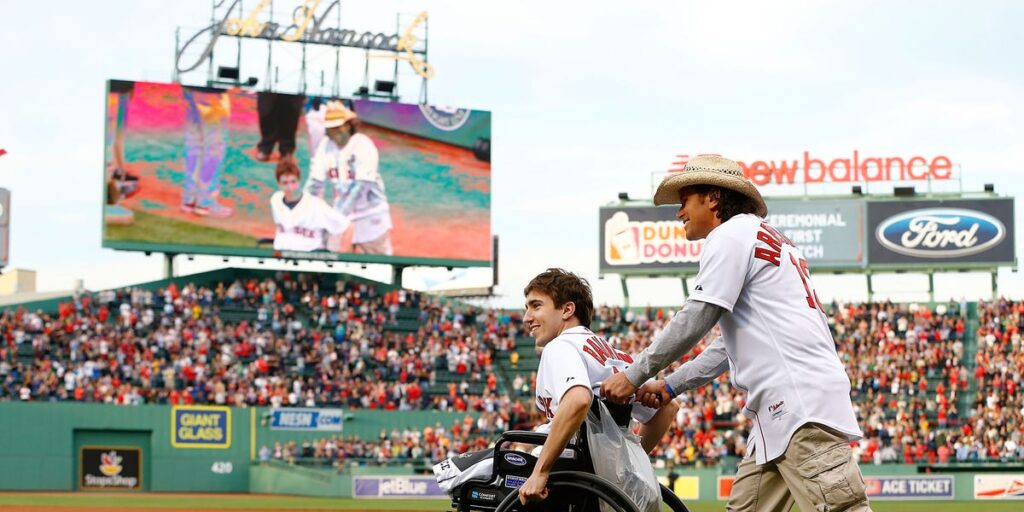A decade has passed since the Boston Marathon bombings, an event that reshaped the lives of countless individuals. As endurance athletes, we understand the nuances of physical and mental challenges—moments when a race takes a turn into the unexpected. Tragedy is not foreign to us; in fact, our journeys are often marked by setbacks—injuries, illness, or obstacles that test our resolve.
The resilience displayed by the survivors of that day echoes the tenacity required in our sport. Take Marc Fucarile, for instance. Cheering on fellow competitors, he was caught in the chaos, ultimately losing his right leg. His journey of recovery has not been about merely facing physical disabilities. Rather, it speaks to a deeper understanding of adaptation, resilience, and a new kind of pacing—not just in races but in life. Fucarile transitioned to using a wheelchair and prosthetic leg, embodying the grit necessary to navigate new challenges. He found in these experiences a way to uplift others, turning his pain into a mission of support for mobility-impaired individuals.
Lee Ann and Nick Yanni also confronted the moment head-on, struck by shrapnel just feet away from the finish line. While their injuries were severe, their recovery became a testament to the power of gradual progress and mental focus. Lee Ann, who was training for another marathon when the bombings occurred, channeled her experiences into motivation. Six months post-attack, she completed a marathon, embodying the principle of pacing that resonates so profoundly in endurance sports. It’s about finding your rhythm even in chaotic circumstances, embracing the discomfort that comes with pushing boundaries, and running towards resilience.
Jeff Bauman’s journey showcases a similar narrative. Severely injured in the blasts, he not only underwent extensive recovery but also played a pivotal role in identifying one of the bombers, demonstrating an embodiment of purpose. His memoir, “Stronger,” is a reflection on more than just survival; it’s a celebration of mental toughness and the drive to rebuild amidst daunting odds. His later experiences in the public eye give credence to the idea that every challenge is an opportunity for growth—a familiar lesson for those of us who face the gentler, yet equally challenging, grinds of long training runs or races.
For younger survivors like Aaron Hern, coping with the physical aftermath of trauma parallels the adjustments many athletes face after an injury. The 11-year-old during the bombings later rose to become a quarterback, working through the physical limitations that once threatened his dreams. His story reminds us that recovery often extends beyond physical healing; it involves pacing oneself mentally along a path of gradual self-discovery and ambition. Each training session becomes a metaphorical step toward success, allowing for reflection on what one has been through, reminding us that every lingering effect can also hold the seeds of our future achievements.
Amidst these challenges, there are stories of emotional resilience. Meghan Zipin, who crossed the finish line moments after the blasts, faced the often invisible battle of PTSD. Her journey illustrates how mental fortitude parallels the physical demands of endurance sports. Writing poetry became her method of processing trauma, a nuanced reminder of the importance of expressing oneself, just as we express our endurance through the many miles we cover. The ability to articulate our experiences contributes to healing, both mentally and physically.
Community emerges as a powerful force in these narratives—something deeply intrinsic to endurance sports. Jacqui Webb and Paul Norden, who were inseparable during the race, used their shared experiences to fuel philanthropic efforts aimed at supporting trauma survivors. Their partnership emphasized how enduring friendships can weather life’s most challenging moments and how collective strength often becomes the cornerstone of recovery. There’s an undeniable parallel here: just as in endurance events, where camaraderie can propel us through fatigue, the connections we foster bring additional motivation and purpose to our journeys.
Each of these stories emphasizes the various forms of recovery—whether physical, mental, or communal—highlighting pacing as fundamental to this iterative process. It’s often less about making a sprint for the finish line and more about sustaining a steady heartbeat through all the ups and downs.
This journey through struggle ultimately teaches us that resilience is not about the absence of hardship but the way we adapt to it. It’s an understanding echoed in our training phases when we face fatigue, adversity, or injury, reminding us that recovery is cyclic and nuanced.
As you lace up for your next long session, remember this: resilience requires patience and adaptability. Embrace the process, trust in your training, and know that every step—whether it leads to triumph or requires navigating a new path—is woven into the fabric of who you are as an athlete.
